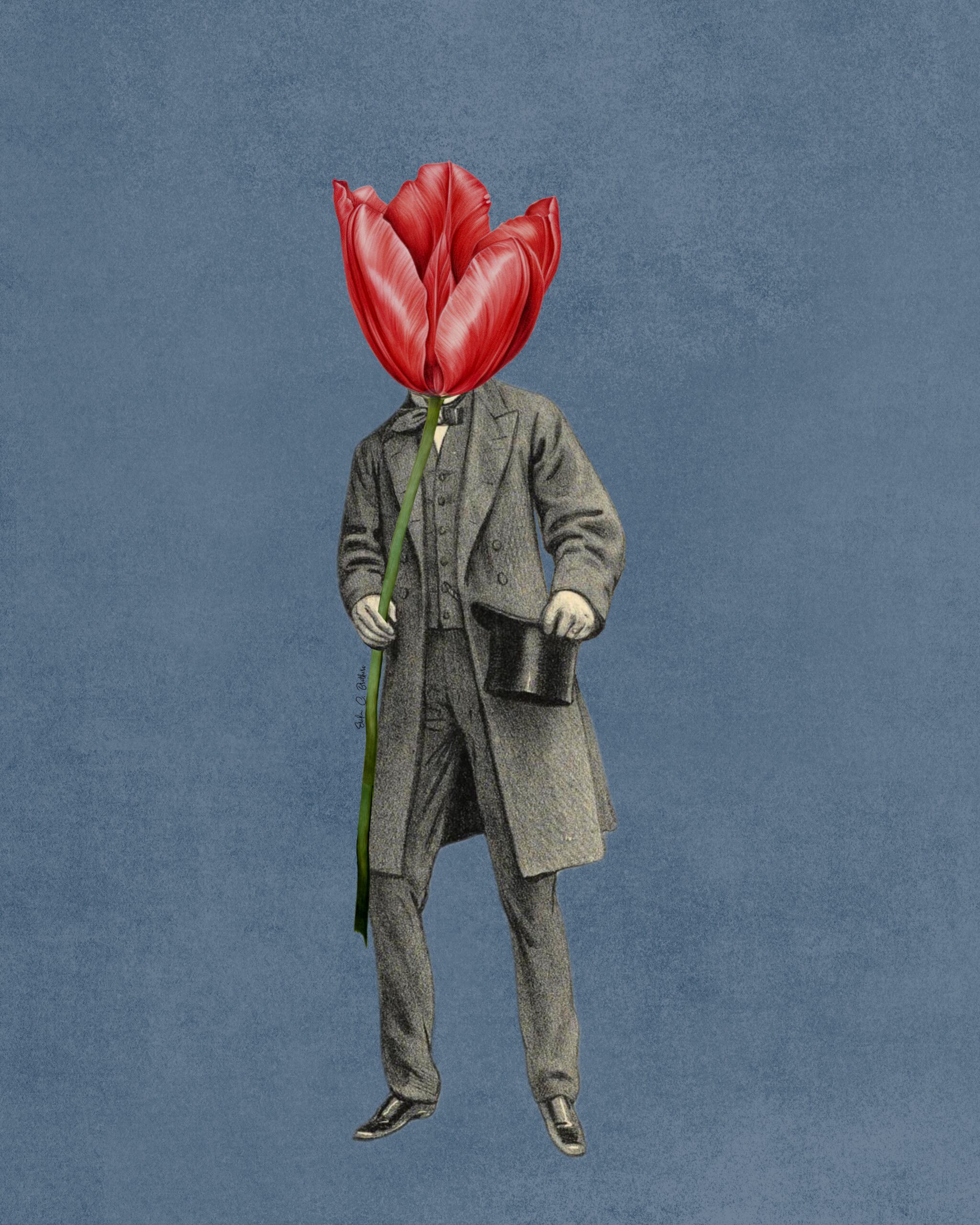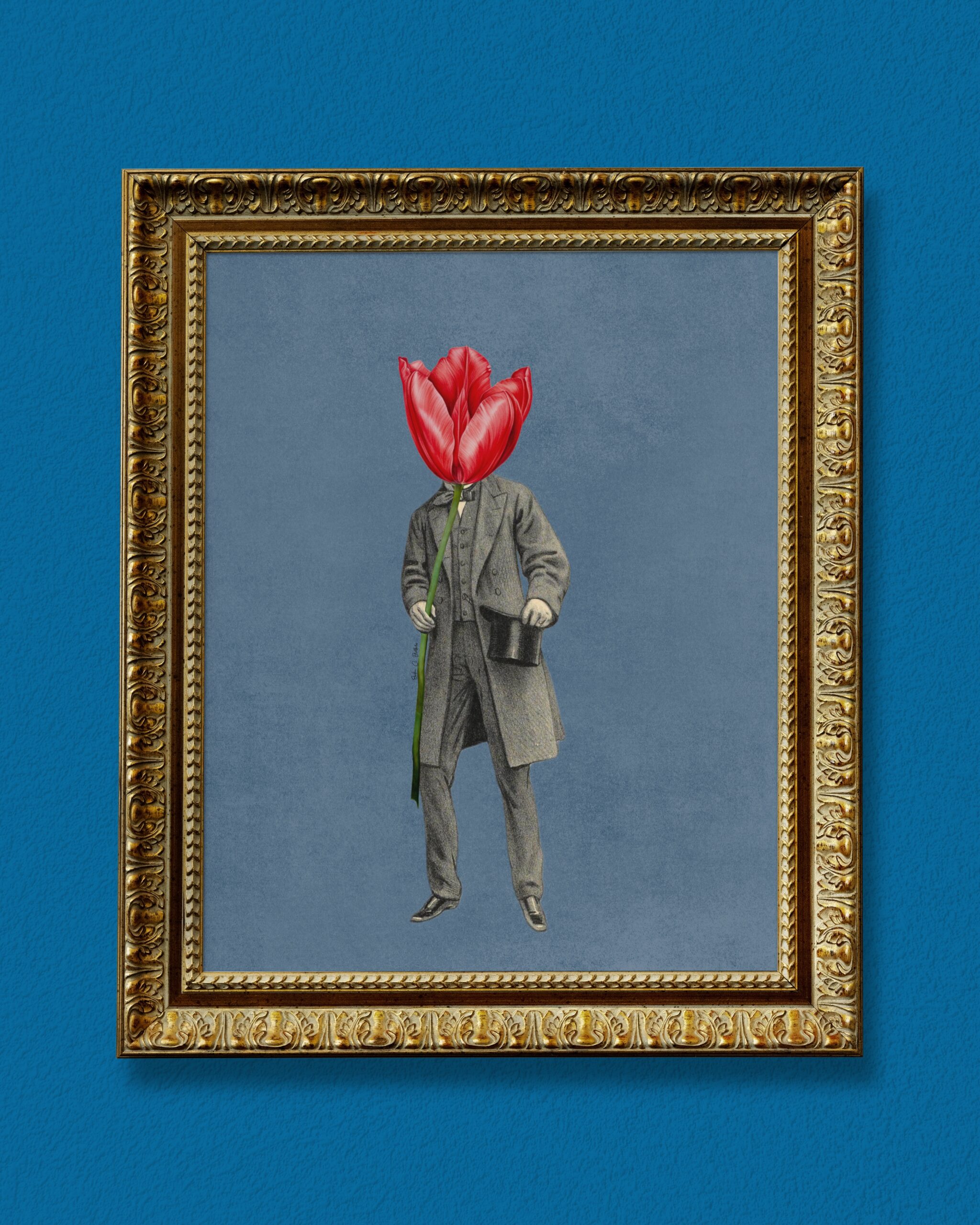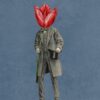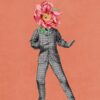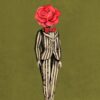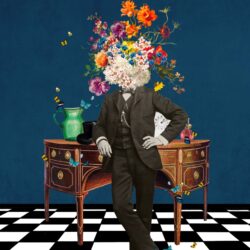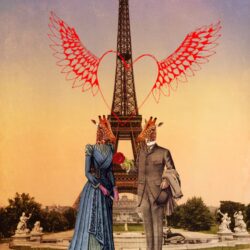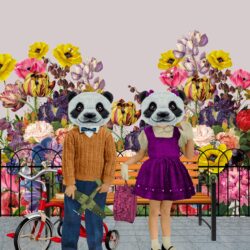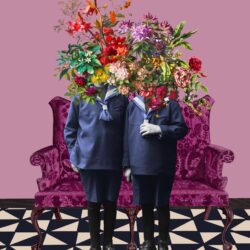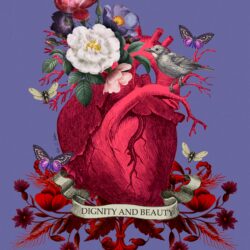Gentlemen in Bloom “Tulip”
Price range: $39.00 through $692.00
All my work is done using the technique called collage (from the French coller), which translates “to paste,” which is an artistic technique that consists of the construction of plastic works through the agglomeration or conjunction of pieces or cutouts from different origins, “trying” to give a unified tone format. In other words, it is about assembling work with bits obtained from other sources such as photographs, illustrations, Artcraft, images in magazines, and everyday objects.
On a personal level, my artistic style is deeply rooted in Kitsch, a style known for its vibrant colors, bold shapes, and striking elements. I often incorporate illustrations from the public domain into my work. My fascination with antiquities and furniture is a recurring theme, evident in the costumes of my characters and the environments where my works’ narratives unfold.
My image sources can include images and cuttings from very old magazines that are passed through a scanner to be processed into digital format. Therefore, it is very possible that the final prints do not have uniform images and can have different textures.
Creations by Erika C. Brothers are printed on Velvet Fine Art paper, which is heavyweight, cotton fiber, and acid-free. The prints use high-quality inks and cotton paper for a realistic look and feel like original photography oil paintings.
The definition of a giclee is a beautiful, long-lasting technology for fine art or photograph reproduction. It uses a high-quality inkjet printer to make individual copies of different sizes and materials.
For more information on the creativity process of this print, see section of Description, below.
*The prints can take up to 8 to 10 business days to print and ship.
*All prices include shipping costs.
*If your country or region does not fall within the current drop-down list of countries or regions, or if you are in need of additional print sizes not listed. Please contact us for options at sales@kikasworkshop.com or by using the contact form on the main page.
*Depending on the Art print selected, another size may be required due to design and pixels; we would advise if a size change is required. Additionally, color variations from computer to print may vary due to the textures of our Premium Fine Art Cotton Paper.
Please read my Terms of Service. We do not accept returns.

